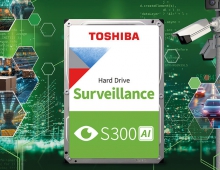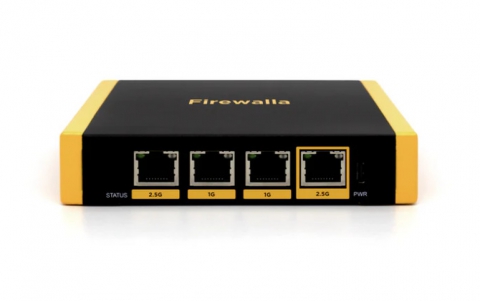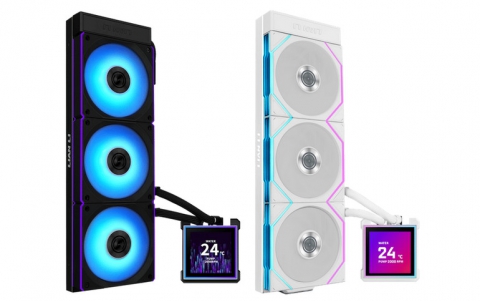
Toshiba Prototypes 30 GB HD DVD-R Disc
At the ISOM/ODS '05 event, Toshiba Corp. presented recording and readout results of the HD DVD-R DL, the company's new double layer HD DVD-R disc with a capacity of 30 GB.
The International Symposium on Optical Memory and Optical Data Storage was held
this year (July 10-14) at the Hyatt Regency in Waikiki Honolulu, Hawaii.
Toshiba revealed details of the prototype, following a press meeting in May 2005, at which the company only showed its playback signals. Along with the development of an organic dye for the recording layer, the company also established a manufacturing process requiring lower costs than the previous DVD-R DL manufacturing process.
To make an HD-DVD disc double-layered, the company needed to reduce the thickness of the Ag reflection layer, located close to the optical head so thatthe laser beam can reach the other layer (Layer 0) more easily. However, the thinner the Ag reflection layer gets, which also works as a heat sink, the weaker its heat releasing effects become; and therefore the larger the heat interferences between recorded marks grow. Toshiba overcame these problems with an organic dye with good heat conductivity, newly developed in conjunction with raw material manufacturers. This dye is a low to high polarity dye, which increases reflection when exposed.
Conventional 2P (photopolymer) process is used to form the middle layer. In existing double layer DVD-R media, disposable polyolefin stampers are used to transcribe the recording layer's concavities and convexities onto the photopolymer. Toshiba has employed 0.6 mm-thick, polycarbonate injection molded stampers instead of the polyolefin stampers. As a result, polycarbonate once used in stampers can be reused as alternative dummy substrates.
The Blu-Ray response
At the same time, Philips showcased the latest developments and results of its research work on behalf of the rival Blu-Ray camp. The Philips research team announced their successfull testing on BD-R (Blu-Ray Recordable) recording procedures.
Unlike the BD-RE (Blu-Ray Rewritable) disc which is based on the phase-change layer technology, and alternatively to the use of a dye layer, Philips proposed the usage of a Cu/ Si bilayer to be applied as the recording medium in a write-once Blu-ray Disc (BD-R). The write process basically comprises the formation of a CuSi alloy containing 25?30 at. % Si, while any excess Si is left behind as unreacted film. Auger analyses of the laser-written layers indicate that recording consists primarily of the diffusion of Si into Cu.
The results coming from Philips labs indicate that this technology offers adequate results in terms of disc readability and high recording speeds. The very low jitter levels of typically 4%, proved to be achievable with equally thick films of Cu and Si as recording medium.
Philips has successfully tested first recordings on Cu/Si bilayer BD-R media at 1x-7x speeds (25GB, single layer). Note that 7x BD-R speed equals 10x for DVD and 30x for CD. The results indicate that the shortest possible recording time was given at a rotational speed fixed at 10800 rpm, which is equal to 200 km/h! At the same time, the linear velocity at 7x is aproximatelly 35m/sec. To make things clear, this means that 25GB of data can be recorded at 7x in just 14 minutes.
The most suitable writing strategy for 7x recording, according to Philips, should be the so-called "Castle Write Strategy". Hence, for speeds of 1X-2X it will use the improved (n-1) writing strategy and for 4X - 7X the Castle writing strategy just mentioned.
Toshiba revealed details of the prototype, following a press meeting in May 2005, at which the company only showed its playback signals. Along with the development of an organic dye for the recording layer, the company also established a manufacturing process requiring lower costs than the previous DVD-R DL manufacturing process.
To make an HD-DVD disc double-layered, the company needed to reduce the thickness of the Ag reflection layer, located close to the optical head so thatthe laser beam can reach the other layer (Layer 0) more easily. However, the thinner the Ag reflection layer gets, which also works as a heat sink, the weaker its heat releasing effects become; and therefore the larger the heat interferences between recorded marks grow. Toshiba overcame these problems with an organic dye with good heat conductivity, newly developed in conjunction with raw material manufacturers. This dye is a low to high polarity dye, which increases reflection when exposed.
Conventional 2P (photopolymer) process is used to form the middle layer. In existing double layer DVD-R media, disposable polyolefin stampers are used to transcribe the recording layer's concavities and convexities onto the photopolymer. Toshiba has employed 0.6 mm-thick, polycarbonate injection molded stampers instead of the polyolefin stampers. As a result, polycarbonate once used in stampers can be reused as alternative dummy substrates.
The Blu-Ray response
At the same time, Philips showcased the latest developments and results of its research work on behalf of the rival Blu-Ray camp. The Philips research team announced their successfull testing on BD-R (Blu-Ray Recordable) recording procedures.
Unlike the BD-RE (Blu-Ray Rewritable) disc which is based on the phase-change layer technology, and alternatively to the use of a dye layer, Philips proposed the usage of a Cu/ Si bilayer to be applied as the recording medium in a write-once Blu-ray Disc (BD-R). The write process basically comprises the formation of a CuSi alloy containing 25?30 at. % Si, while any excess Si is left behind as unreacted film. Auger analyses of the laser-written layers indicate that recording consists primarily of the diffusion of Si into Cu.
The results coming from Philips labs indicate that this technology offers adequate results in terms of disc readability and high recording speeds. The very low jitter levels of typically 4%, proved to be achievable with equally thick films of Cu and Si as recording medium.
Philips has successfully tested first recordings on Cu/Si bilayer BD-R media at 1x-7x speeds (25GB, single layer). Note that 7x BD-R speed equals 10x for DVD and 30x for CD. The results indicate that the shortest possible recording time was given at a rotational speed fixed at 10800 rpm, which is equal to 200 km/h! At the same time, the linear velocity at 7x is aproximatelly 35m/sec. To make things clear, this means that 25GB of data can be recorded at 7x in just 14 minutes.
The most suitable writing strategy for 7x recording, according to Philips, should be the so-called "Castle Write Strategy". Hence, for speeds of 1X-2X it will use the improved (n-1) writing strategy and for 4X - 7X the Castle writing strategy just mentioned.





















